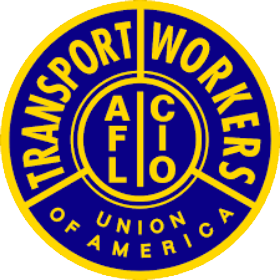Who’s Fixing Your Plane? Do You Know?
Published 13 Jun, 2011
In the airline industry, we like to fix our problems on the ground. Tow trucks can’t help at 30,000 feet.
Mechanics and other ground workers employed at U.S. airlines take great pride in making the U.S. air transportation system the safest and most reliable in the world. Airline workers have a very personal stake in doing things right—our families fly on the planes we fix.
But do the executives who run our airlines share the same concerns about safety? What about members of Congress?
Earlier this spring, the Transport Workers Union of America (TWU) released a report, “Aircraft Maintenance in America,” to members of Congress and the media. Among its key findings:
- As much of 40% of airline maintenance at seven major carriers is now outsourced to contract operations in the United States and overseas—up from just 26% in 1999.
- Aircraft flown by major U.S.-based carriers are now being maintained and repaired in overseas facilities, including locations in China, El Salvador, Singapore, Mexico, the Philippines and Chile.
- The FAA has authority to inspect these overseas facilities—but doesn’t have enough people to do the job.
- Many facilities outside the U.S. have not been inspected for five years or more.
- Workers in overseas facilities are not subject to routine drug and alcohol tests or background screening.
- At least one member of Al Qaeda was found working at a maintenance facility used by U.S. airlines in 2003. The faulty procedures that allowed this lapse in security have not been addressed.
Hundreds of millions of airline passengers have no way of knowing when or where the aircraft on which they are flying was maintained or repaired, or under what conditions. This lack of transparency undermines the trust that is essential to commercial aviation.
An alarming number of U.S. carriers are taking advantage of legal loopholes to outsource overhauls and other maintenance functions to thinly regulated facilities overseas. Between 2004 and 2009 the number of overseas facilities performing work on U.S. aircraft reached 731, more than double its 2004 level. As a result, we know less than we should about who is fixing our planes. Making matters worse, the proposed FAA reauthorization does next to nothing to address the loopholes that led to this shift to overseas maintenance.
Moreover, the overall figures for outsourced maintenance would be even higher if not for the large share of repair work still done in-house at American Airlines. At American, almost all maintenance is performed by U.S.-based mechanics employed by the airline.
Operations at American, however, run counter to industry trends. The surge towards outsourcing began following the nightmare of 9/11, when major air carriers were desperate to save costs. It has continued, however, for a different reason: airline companies want to avoid, at any price, the rigors of inspection by the FAA.
William McGhee, who served as the consumer advocate on the Department of Transportation’s Future of Aviation Advisory Committee last year, recently wrote in a New York Times guest editorial, “… safety transcends party politics. White-knuckle moments onboard stricken commercial airlines shed light on the dangers of unsupervised maintenance—particularly if that light is shining through a gaping hole in the fuselage of a Boeing 737.”
Airline executives have demonstrated that they are unwilling to fix this problem. It is imperative for Congress to fix it for them and for all of us. We can’t afford to wait for a flying tow truck.
